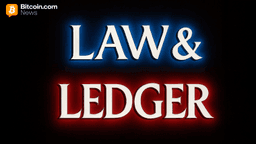Real-World Asset Market Cools off With a 1.09% Pullback This Month
Tokenized real-world assets (RWAs) slipped slightly this month, with total distributed value falling 1.09% as $268 million quietly exited the sector since

Obscura Hardfork: Privacy, Scalability, and Network Resilience
This content is provided by a sponsor. The Beldex blockchain upgraded to Obscura at block height 4939540, on December 7, 2025. Obscura strengthens a core

Is Crypto a Security? Part II: Utility Tokens
Law and Ledger is a news segment focusing on crypto legal news, brought to you by Kelman Law - A law firm focused on digital asset commerce.

DEA Veteran Accused of Betrayal, Laundering Cartel Drug Proceeds via Crypto
Former DEA official Paul Campo has been indicted in New York for conspiring with Mexico’s CJNG cartel to launder illicit funds via crypto.


